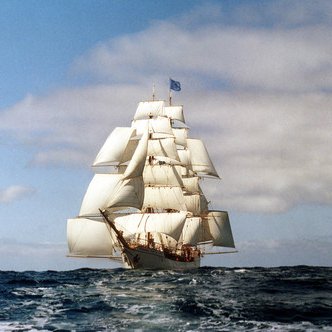Argentine Antarctic Day

Although the Antarctic Continent is still considered the last “No Man’s Land” on Earth, and it has been agreed by the Antarctic Treaty that no country owns the territory and its immediate surrounding waters, seven sovereign states hold territorial claims to parts of Antarctica. Among them is Argentina, the first country to have a permanent presence in the Antarctic Region.
It all started far back, in 1902, and not in South America but in Scottish lands. There, the bark Hekla, built in 1872 and working for the whaling industry, was purchased and refitted by William Speirs Bruce for use as the research vessel for the Scottish National Antarctic Expedition. The ship was equipped with scientific laboratories prepared to study all their findings both at sea and on land, plus for conducting an extensive meteorological programme. This latter purpose was of prominent importance for the future development of events that would lead to the establishment of the first Antarctic permanent station, manned by the Argentine government.

She sailed south, heading to the Weddell Sea under the command of Thomas Robertson and his crew of 27, in addition to six scientific staff, a taxidermist, an artist, and a handful of sledge dogs. They arrived at the South Orkney Islands in February of the following year, and Bruce kept on his way south until the ship became beset by ice. Getting free of its hold, she returned to South Orkneys, where the crew built a camp to overwinter at Laurie Island. From this enterprise, on the rocky and icy coasts of the island, still barely stand nowadays the remains of what they called the “Omond House.”
But that was not the end of the expedition. The scientific program continued with part of the participants researching around the South Orkneys, while Bruce and the rest of the crew sailed to the Falklands first and then to Buenos Aires. He was eager to keep the meteorological studies he started down south and saw an opportunity there, in the Argentine capital, where he agreed to hand it over to the Argentine government. A team of their scientists accompanied them, sailing south in the Scotia on her trip back to South Orkneys. The Argentines were left at the station with the idea of being relieved the next season by the Argentine vessel Uruguay, while the Scottish expedition took their chance once more to explore the Weddell Sea, afterward sailing back north again to Cape Town, then returning home.
Since then, the South Orkney station on Laurie Island has been continually running and has produced the longest uninterrupted meteorological record from south of the 60° parallel. First, with the research conducted during 1904 from the “Omond House,” then just a year later with the addition of the building “Casa Moneta” to what has since been known as “Orcadas Station.” Nowadays, it has 11 buildings, and the station is home to about 65 people during summer and a reduced complement of less than 20 in winter.
On the 22nd of February, Argentine Antarctic Day commemorates the inauguration of this Meteorological Observatory on Laurie Island, considered the first established Antarctic Base, and with it, Argentina’s longstanding and continuous presence and scientific research in Antarctica.
Amidst the ongoing preparations and maintenance of the ship for the trip that is about to start, with a sailing schedule of 57 days visiting Antarctica, South Georgia, passing by Tristan da Cunha, and ending all the way in Namibia, the crew found time to ready the ship, clean her decks, cabins, and common spaces to accommodate this event.
Chef Monopoli crafted a delightful menu based on seafood that showcased the region's finest ingredients. The sumptuous feast included fresh fish, succulent shellfish, and other ocean delicacies, all beautifully presented to tantalise the taste buds. The crew and guests, including representatives from various government departments, gathered to celebrate both Argentina's Antarctic Day and the enduring legacy of Bark Europa's voyages, which started visiting Ushuaia 25 years ago.
To honour this milestone, a special dinner was held onboard Bark Europa, prepared by renowned Ushuaia chef Jorge Monopoli. He is the head chef at the restaurant Kalma. Located in the heart of Ushuaia, it is a gastronomic beacon that connects cuisine with the unique environment of Tierra del Fuego. Under Monopoli’s direction, the restaurant has reinterpreted the Fuegian landscape through a culinary proposal that pays tribute to the work of local fishermen, gatherers, and producers. Kalma not only highlights indigenous ingredients but also builds a bridge between cuisine and the territory, offering an experience that transcends gastronomy.
The evening was filled with good food, vibrant music, and an atmosphere of camaraderie. Everyone in attendance enjoyed the celebration, cherishing the unique bond between Bark Europa and the beautiful regions of Ushuaia and Antarctica.
Here’s to many more years of adventurous journeys and cherished memories aboard Bark Europa.

























